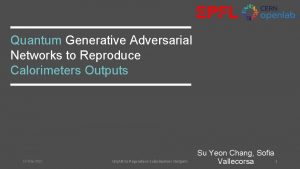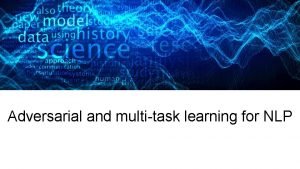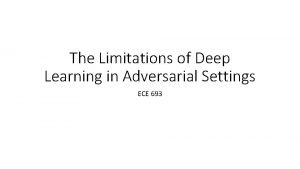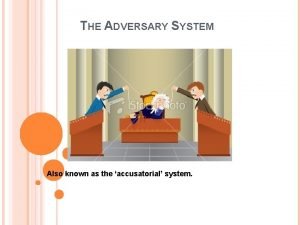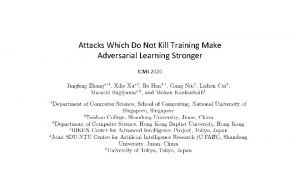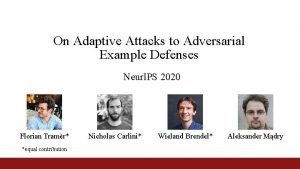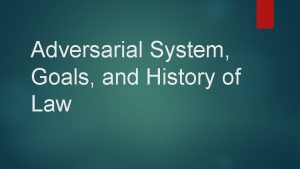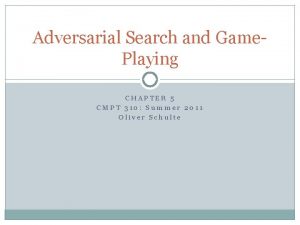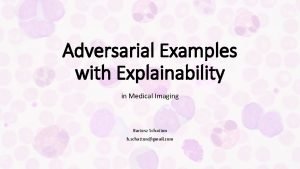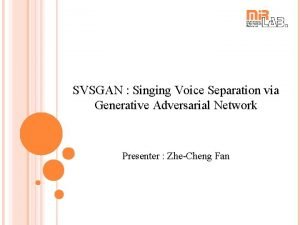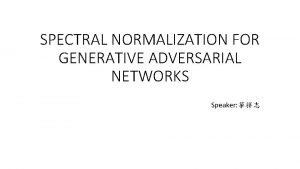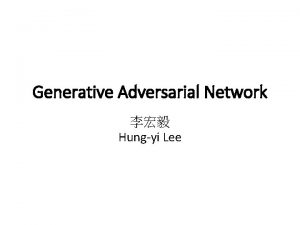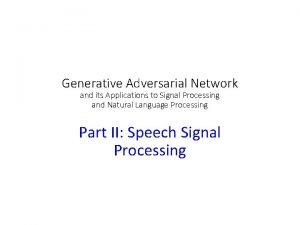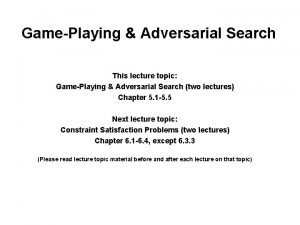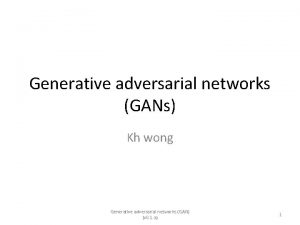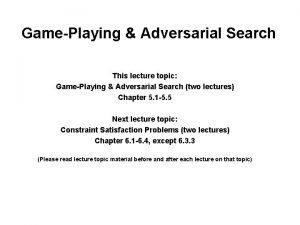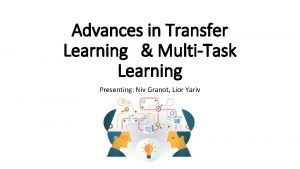Adversarial and multitask learning for NLP 27 Jan






















- Slides: 22

Adversarial and multi-task learning for NLP 27 Jan 2016

Generative Adversarial Networks (GANs)

Generative Adversarial Networks (GANs) • Goodfellow et al (2014) https: //arxiv. org/abs/1406. 2661 • Minimize distance between the distributions of real data and generated samples • Discriminator tries to correctly distinguish real from fake data • Generator tries to fool discriminator

GAN intuition Image source: https: //www. analyticsvidhya. com/blog/2017/06/introductory-generative-adversarial-networks-gans/

GAN formulation • Minimax game between the generator and discriminator • In practice, the generator is trained to maximize

Examples of the discriminator’s loss • Scenario 1: Discriminator winning: • D(X) = 0. 9 • D(G(Z)) = 0. 1 • V(D, G) = log(0. 9) + log(1 – 0. 1) = – 0. 211 • Scenario 2: Generator winning: • D(X) = 0. 5 • D(G(Z)) = 0. 5 • V(D, G) = log(0. 5) + log(1 – 0. 5) = – 1. 386

GANs vs VAEs (image generation) Image source: https: //arxiv. org/pdf/1512. 09300. pdf

GANs for text generation • Problematic: GANs with the default formulation are not differentiable • Model by Rajeswar et al. 2017 https: //arxiv. org/pdf/1705. 10929. pdf Image source: https: //arxiv. org/pdf/1705. 10929. pdf

Multi-Task Learning (http: //ruder. io/multi-task/index. html)

Multi-Task Learning (MTL) – Intuition • Machine learning approaches typically focus on one task, i. e. optimize one loss • Sharing representations between related tasks, the model can learn better on the original task. • MTL optimizes multiple losses • Two approaches to MTL: • Hard parameter sharing • Soft parameter sharing

Hard parameter sharing • Most common approach • Share hidden layers between tasks • Task specific output layers • Reduces the risk of overfitting • The risk of overfitting the shared parameters is an order N (number of tasks) smaller than overfitting the task-specific parameters, i. e. the output layers Source: http: //ruder. io/multi-task/index. html

Soft parameter sharing • Each task has its own model with its own parameters • The distance between the parameters of the model is regularized in order to encourage the parameters to be similar (e. g. with L 2 distance) Source: http: //ruder. io/multi-task/index. html

Why does MTL work? • MTL effectively increases the sample size that we are using for training our model. • All tasks are noisy. Our goal in training for task A is to learn a model that ignores data-specific noise and generalizes well. • Tasks have different noise patterns • A model that learns on two (or more) tasks is able to learn a more general representation Source: http: //ruder. io/multi-task/index. html

MTL examples

Cross-stitch networks (Misra et al. , 2016) • Two separate models • “Cross-stitch” units learn a linear combination of the output of the previous layers of both networks • https: //arxiv. org/pdf/1 604. 03539. pdf

Cross-stitch unit (Misra et al. , 2016)

Joint Many-Task Model (Hashimoto et al, 2017) • Hierarchical MTL for textual entailment classification • Supervised low-level auxiliary tasks: • POS tagging • Chunking • Dependency parsing https: //arxiv. org/pdf/1611. 01587. pdf

Examples of auxiliary tasks • In computer vision: • predicting different characteristics of the road as auxiliary tasks for predicting the steering direction in a self-driving car (Caruana, 1998) • use head pose estimation and facial attribute inference as auxiliary tasks for facial landmark detection (Zhang et al. , 2014) • In NLP: • jointly learn query classification and web search (Liu et al. , 2015) • phoneme duration and frequency profile for text-to-speech (Arik et al, 2017)

Predicting features as an auxiliary task • Predicting whether an input sentence contains a positive or negative sentiment word as auxiliary tasks for sentiment analysis (Yu et al. , 2016) • Predicting whether a name is present in a sentence as auxiliary task for name error detection (Cheng et al, 2015)

Adversarial auxiliary tasks • Using a task with the objective that is opposite to what we are trying to achieve • Examples: • Adversarial multi-task learning for text classification (Liu et al. , 2017) • Style Transfer in Text: Exploration and Evaluation (Fu et al. , 2018)

Adversarial multi-task learning for text classification (Liu et al. , 2017) • Uses an adversarial objective to divide taskspecific and shared spaces • Intuition: “a transferable feature is the one for which an algorithm cannot learn to identify the domain of origin of the input observation”

Style Transfer in Text: Exploration and Evaluation (Fu et al. , 2018) Style embedding model Multi-decoder model Adversarial
 Quantum generative adversarial learning
Quantum generative adversarial learning Multi task learning nlp
Multi task learning nlp The limitations of deep learning in adversarial settings.
The limitations of deep learning in adversarial settings. Cuadro comparativo e-learning y b-learning
Cuadro comparativo e-learning y b-learning Adversarial stakeholders
Adversarial stakeholders The adversarial system
The adversarial system Adversary system meaning
Adversary system meaning Hexiangnan
Hexiangnan Friendly adversarial training
Friendly adversarial training Neur ips
Neur ips Adversarial interview
Adversarial interview Adversarial system law definition
Adversarial system law definition Adversarial search problems uses
Adversarial search problems uses Adversarial examples
Adversarial examples Singing
Singing Spectral normalization for generative adversarial networks
Spectral normalization for generative adversarial networks Conditional generator
Conditional generator Adversarial training
Adversarial training Adversarial training
Adversarial training Nicolas papernot
Nicolas papernot Adversarial patch
Adversarial patch Unsupervised image to image translation
Unsupervised image to image translation Formuö
Formuö
